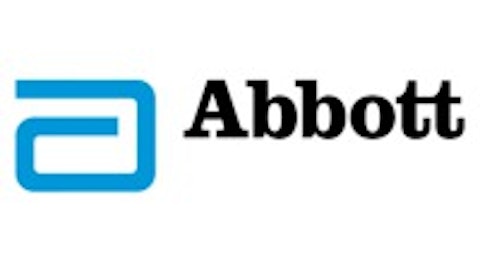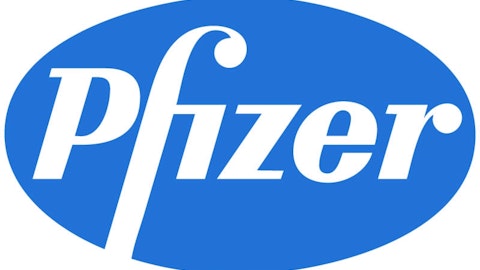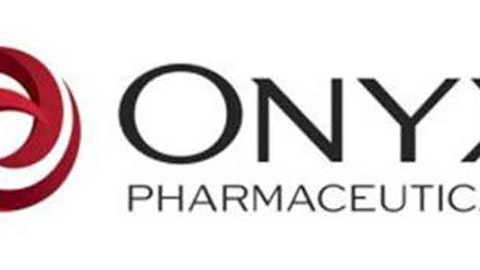When it comes to investing for the long term, sometimes companies that are thought of as “stable” or “boring” turn out to be the best thing for your portfolio. For example, if you had invested $10,000 in Exxon Mobil Corporation (NYSE:XOM) in 1993 (20 years ago) and had reinvested all of your dividends, your original investment would be worth about $120,000 today, or an annual return of 14%. There is a great example like this in every sector, and today’s focus is going to be on healthcare. While the latest biotech company or small pharmaceutical firm may be a lot more “exciting”, I prefer to go with the time-tested Johnson & Johnson (NYSE:JNJ).
About J&J
Johnson & Johnson is perhaps best-known for its name-brand consumer products such as Band-Aid, Immodium, Tylenol, Neutrogena skin care products, and Johnson’s extensive line of baby products which are present in virtually every house in America with an infant. However, that segment of J&J’s business is only responsible for about one-fifth of the company’s revenues. The vast majority of the company’s revenue comes from pharmaceuticals (38%) and medical devices (41%).
Johnson & Johnson (NYSE:JNJ)’s pharmaceutical unit produced over $25 billion in sales last year, with six individual drugs with sales of over $1 billion. As of the company’s last quarterly report, J&J had 17 drugs in late-stage development and spends almost $8 billion annually on R&D, demonstrating its commitment to continued growth and innovation, despite its size and success. The medical devices segment produces a wide variety of products for such purposes as wound care, sports medicine, glucose monitoring (Lifescan), joint reconstruction products, and contact lenses to name a few.
Performance: dividends, historical share price, earnings, etc.
Johnson & Johnson (NYSE:JNJ) has paid a quarterly dividend since 1944 and has raised the payout virtually every year since then. Currently shares pay $2.64 per share, which works out to an annual yield of 3.08% at the current share price. Twenty years ago, the payout was just 26 cents per share (split-adjusted), so the dividend has increased tenfold in two decades, or at an average rate of 13% per year. This kind of sustained creation of shareholder value is very rare!
Also over the past 20 years, shares have risen from just over $9 per share to the current price of around $85. The combination of the incredible sustained performance in terms of both dividend yield and share price produced a great return. The chart below is a snapshot of how a hypothetical $10,000 investment in Johnson & Johnson (NYSE:JNJ) 20 years ago would have performed, assuming all dividends were reinvested. The initial $10,000 would be worth over $148,000 today! Not exactly boring, huh?

The price of admission
Despite what I consider to be an extremely impressive track record of long-term consistent performance, Johnson & Johnson (NYSE:JNJ) still trades at a relatively low valuation of just 15.7 times this year’s earnings. Also worthy of consideration is the company’s great balance sheet, which includes almost $10 billion in net cash (cash minus debt). The company is projected to increase its earnings from $5.41 per share for this year to $5.79 and $6.15 in 2014 and 2015, respectively. There is no reason to think that J&J will not be able to keep increasing its dividend and adding value for its shareholders going forward.
Other great rock-solid choices in the sector
There are several good long-term names to choose from in the healthcare sector, Johnson & Johnson (NYSE:JNJ) just happens to be my personal favorite. Pfizer Inc. (NYSE:PFE) and Merck & Co., Inc. (NYSE:MRK) are both perfectly good additions to your portfolio.
Pfizer produces a wide range of prescription drugs including such well-known names as Lipitor, Lyrica, and the infamous Viagra. One potential downside is the lack of diversification to other areas of healthcare, such as medical devices or OTC products like J&J produces. However, Pfizer trades at a very attractive 12.8 times this year’s earnings and pays a very good 3.37% dividend yield. While not quite as stellar as Johnson & Johnson (NYSE:JNJ) in terms of cash/debt ratio, Pfizer Inc. (NYSE:PFE) still has a very attractive balance sheet. The company is spending about $7 billion annually on R&D and has 25 drugs in late-stage development.
Merck & Co., Inc. (NYSE:MRK) also produces a variety of prescription drugs such as Januvia, Zocor, and Singulair. Merck pays the highest yield of the three at about 3.67% annually, and trades for 13.2 times 2013’s expected earnings. Merck is also a very ambitious company; with the most R&D spending of the three featured here ($7.9 billion) and has 20 products in the late stages of development.
Summary
Whichever you choose, my primary objective here is to get you to throw out the preconceived notions (especially prevalent among younger investors) that companies like these are boring investments. Johnson & Johnson (NYSE:JNJ) happens to be my personal favorite in the space due to its amazing record of past performance, current financial health and stability, and commitment to future growth and development.
The article Why Will This “Boring” Healthcare Company Produce Exciting Gains in Your Portfolio? originally appeared on Fool.com and is written by Matthew Frankel.
Matthew Frankel has no position in any stocks mentioned. The Motley Fool recommends Johnson & Johnson. The Motley Fool owns shares of Johnson & Johnson. Matthew is a member of The Motley Fool Blog Network — entries represent the personal opinion of the blogger and are not formally edited.
Copyright © 1995 – 2013 The Motley Fool, LLC. All rights reserved. The Motley Fool has a disclosure policy.






